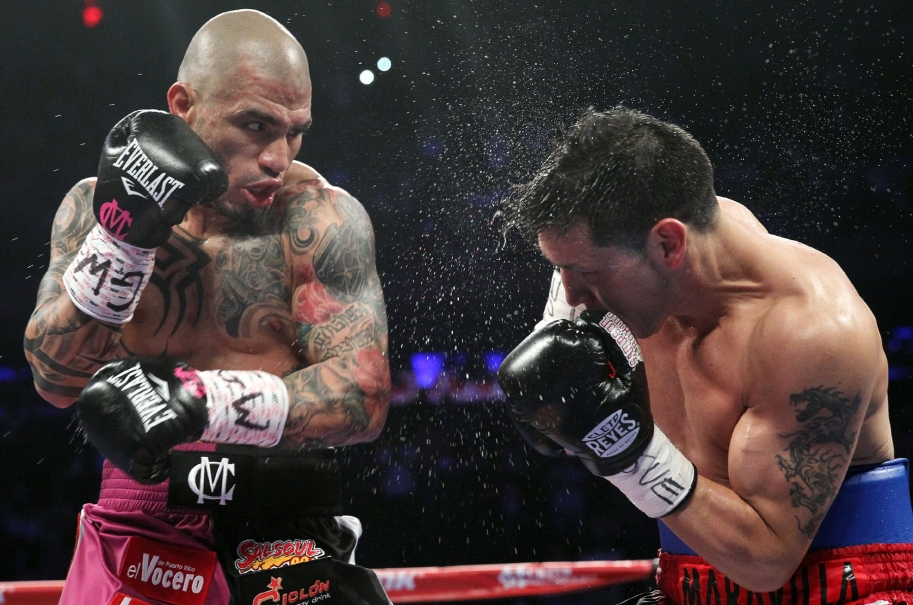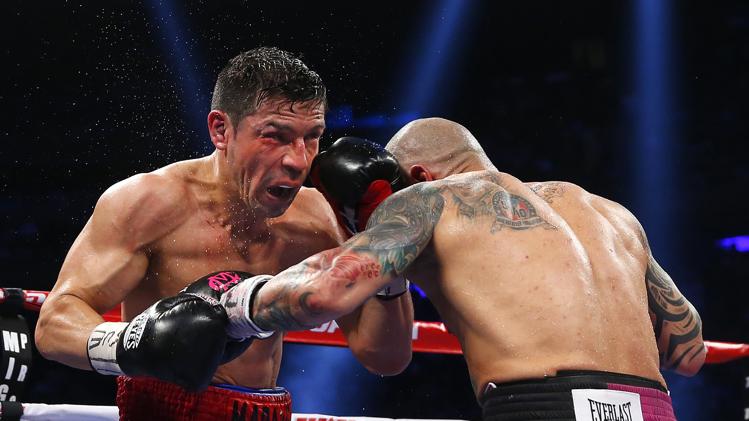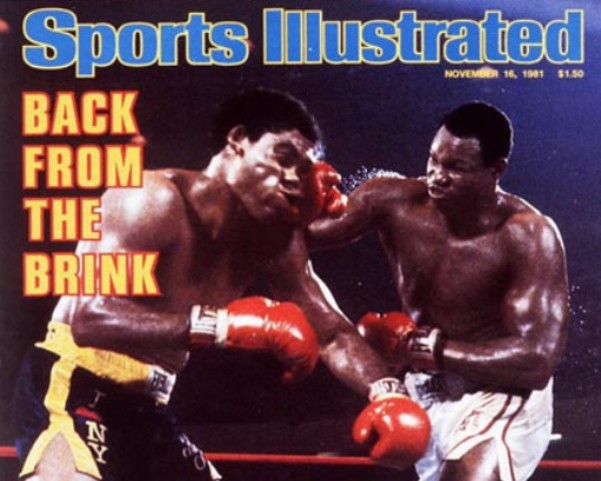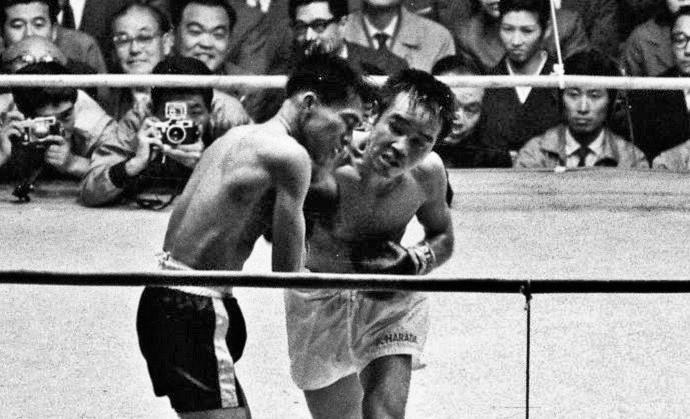Cotto vs Martinez: King Of New York
With pro sports in a deep freeze due to the coronavirus pandemic, now is a good time to re-feature some great articles from the recent past. Here is our feature report on the middleweight match between Sergio “Maravilla” Martinez and Miguel “Junito” Cotto that happened on this date back in 2014. Our own Eliott McCormick made the journey to “The Big Apple” for this keenly anticipated showdown and gave fans an insightful report on a most consequential clash. Check it out:

Puerto Rican pride was salvaged and a career revitalized when Miguel Cotto stopped Sergio Martinez at Madison Square Garden Saturday night. For the thousands of Boricuan boxing fans, it was a glorious conclusion to a night that had begun inauspiciously when Puerto Rican fighters suffered defeat in two bouts preceding the main event. Then, after an oddly understated entrance, the Garden came alive when Miguel Cotto stepped into ring. And after Cotto dropped Sergio Martinez three times in the opening round, the mood in the venerable arena turned blood-thirsty. The slaughter would last eight more rounds, with each of Cotto’s blows punctuated by an appreciative roar, but the contest was in fact decided in its first three minutes. It was a dazzling display of power boxing by a man many of us had overlooked.
Despite his tenuous health, Argentine champion Sergio Martinez had been favored to win. The assumption was that if he entered in serviceable shape, his southpaw stance and superior speed and power would be simply too much for Cotto to overcome. Such sober-minded, objective (or fanciful) prognosticating did little to subdue the enthusiasm of the Boricua’s Puerto Rican fans, who turned out in droves for Friday’s weigh-in. And yet I overheard at least half a dozen conversations between Cotto fans, both at the weigh-in and in the moments leading up to Saturday’s fight, expressing anxiety over what the champion might do to their hero should “Maravilla” arrive in good health.
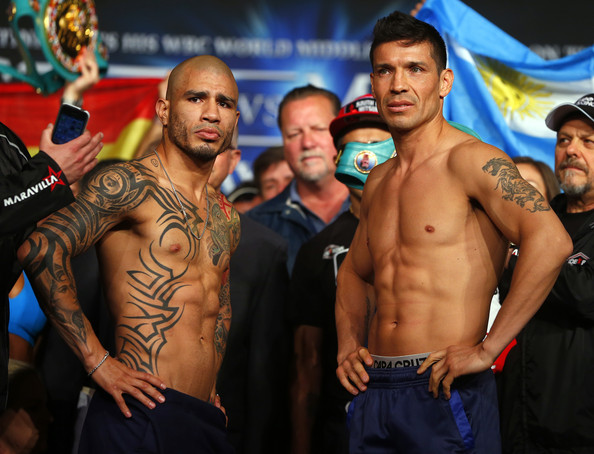
Everything (except, perhaps, common sense) suggested that Martinez’s body had mended. He looked tremendous at Friday’s weigh-in, flashing his Versace smile as he exhorted the crowd to continue booing him. Personally, I don’t believe he was betrayed by a wonky knee. Rather than damaged ligaments, it was age and cumulative ring attrition that robbed Martinez of his customary zip. Saturday felt like a rite of passage for “Maravilla,” but of the sort a boxer dreads: when it is made unambiguously clear that prizefighting is no longer a viable profession if one wishes to age gracefully.
Of course, none of this was known prior to the bout’s first round. I had subscribed to the idea that Martinez was sufficiently healed to win. After all, Cotto is a fighter with considerable mileage himself. This made witnessing the Puerto Rican pomp in Manhattan feel like a sad case of misguided enthusiasm. Cotto has always been a fine boxer with a pleasing style and a likable, if sedate, demeanor, but he didn’t appear dynamic enough to overcome the disadvantages of facing someone bigger, stronger, and faster. Or so I believed. And thus to me the Boricuan pride in Cotto seemed like a form of self-exaltation that would inevitably let the faithful down. At Friday’s weigh-in, attended by thousands forming a line that snaked down Seventh Avenue, Cotto’s fans danced, sang, and reveled in themselves. It was mid-afternoon, and their enthusiasm wasn’t abetted by alcohol but a sense of collective pride, which they projected onto their fighter.

In short, Cotto owned MSG that night, even before the match began. It’s difficult to think of a North American athlete more closely identified with an American city than Miguel Cotto is with “The Big Apple.” He isn’t the best in his sport, nor is he its most popular athlete, but his fights are major events in New York City, a fact made possible by the Puerto Rican diaspora’s embrace of him. Conversely, support for Sergio Martinez in no way approached the same level. There were Argentine fans present of course, but they might literally have been outnumbered 400 to 1, most of them well-to-do men and woman in their 40s and 50s. Meanwhile, “The Boricua” had monopolized the young men with heavy New York accents, their rapid speech like an audio tape on fast-forward.
Conventional wisdom dictated that Cotto was the underdog, but if he was going to win, he would have to do so by aggressively getting inside of Martinez’s reach and roughing him up. The challenger accomplished this spectacularly in the first round, hurting Martinez with a left hand and then proceeding to floor the champion three times. The din in the Garden swelled to a crescendo during this unexpected onslaught and while Martinez bravely got to his feet after each knockdown, he was clearly hurt and indeed, was fortunate to hear the bell.
From then on, the two fighters were, in a figurative sense, moving in opposite directions even as they came together in ring center. Martinez tried to establish a rhythm by staying outside of Cotto’s jab, where he couldn’t be assaulted again. But he had no energy, no spark, and looked physically shot: slow, ponderous, and throwing punches that could have been timed with a calendar. This spells doom for a shoddy defensive fighter who keeps his hands too low for his own good, while Cotto fought with the pep of a man not only much younger but with the acumen of a tenured champion. “Junito” was relaxed, yet aggressive and efficient with his punches, connecting at a better than fifty percent clip. All of this confidence and effectiveness was contained in his body language; Cotto’s muscular shoulders bobbed loosely as his feet skimmed across the canvas.
The disparity between the combatants was so great that it was obvious, quite early, that Martinez stood no chance. As a proud champion should, he refused to quit, and it became difficult to watch when, in the ninth round, Cotto’s relentless attack had Martinez staggering about the ring like a drunkard trying to avoid an aggrieved lover. Any person with a beating heart had to feel for him then. When a top boxer is beaten badly, discussion always follows about how he’s been “exposed,” and often this talk is mere hyperbole, but there appeared to be some revelation here. Martinez, a courageous champion, received an authoritative beat-down, the kind which ends careers. But when Sergio trudged back to his corner after the dreadful ninth, trainer Pablo Sarmiento benevolently ended the bout to save his man from shaving more years off his life.
How and why did Cotto vs Martinez unfold this way? Common sense suggests the challenger’s dominance was born of stylistic improvements attained under new trainer Freddie Roach, combined with Martinez’s obvious physical deterioration. It was also due to Cotto’s self-confidence. Despite being the underdog he remained certain he was the better man, a knowledge suggested by his pre-fight demands. The “Boricua” knew he could pierce Martinez’s defense and he executed his fight plan masterfully. It was one of the most impressive displays of his career, a masterpiece exhibiting all of Cotto’s skills in their sharpest forms.
Miguel Cotto’s popularity is now indivisible from his performance Saturday. For a fighter to climb boxing’s ladder of popularity, he must forge a visceral connection with the fans. (For example, Guillermo Rigondeaux might be the most talented man in the sport but he remains a virtual unknown.) For this to happen, the fighter’s style, both as a pugilist and a person, must reinforce something about a specific fan base for him to achieve maximum popularity. For Puerto Ricans, Cotto’s dignified manner, boxing skill, and toughness reify positive traits they feel are representative of them. All of this was magnified on Saturday, especially in the context of Cotto’s defeats to Pacquiao, Mayweather and Trout. With his upset domination of “Maravilla,” Cotto effectively erased those losses and reaffirmed himself as Puerto Rico’s favorite fighter.
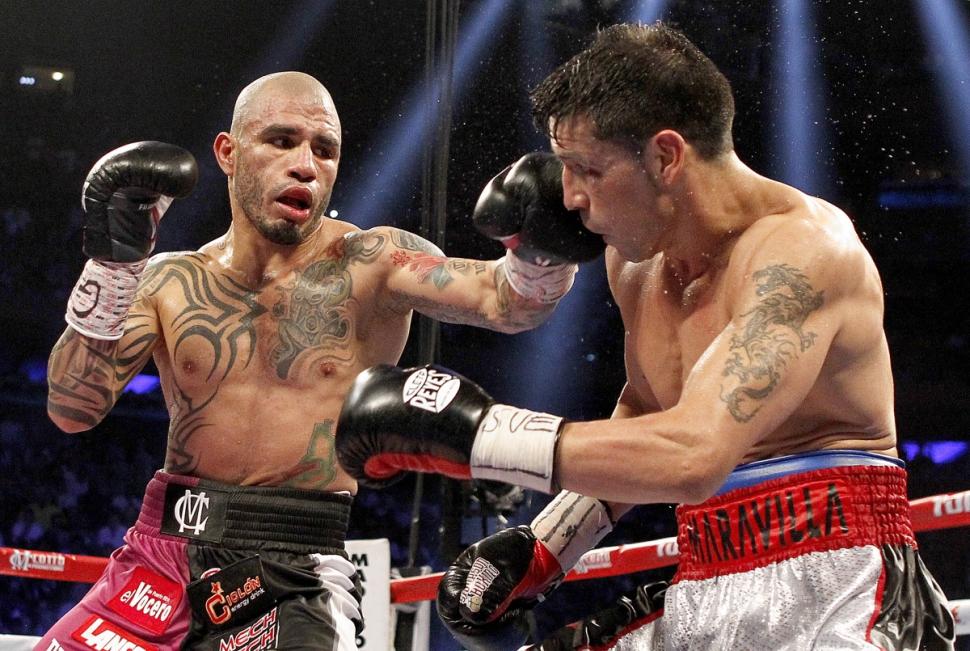
Sergio Martinez has never enjoyed the same kind of popularity. He has taken a longer and more obscure road to stardom, moving from Argentina, to Spain, to America. He doesn’t speak English and has nowhere near the minority backing in the United States that Cotto does, and despite his impressive credentials and physical marketability, he has been one of boxing’s least popular champions. In no way is this an indictment of his career, as results, rather than popularity, should be judge of one’s success. Given the way things ended on Saturday, though, a comeback appears unlikely. Unless you are Bernard Hopkins (and the action-oriented Martinez certainly is not), physical decline is a cruel and unavoidable truth. Martinez’s body showed itself incapable of dealing with Cotto, though “Maravilla” proved, again, his heart remains in top working condition. He won over the hostile crowd afterwards with his dignified acceptance of defeat.
When the fight ended, Miguel Cotto’s fans overtook Pennsylvania square and continued their chanting and drum beating. Now early in the morning, Manhattan was more subdued, as the phantasmagoric effects of light, glass, and bustle produced by the evening sunset were gone and the side streets mostly empty. Their stillness mirrored Miguel Cotto’s demure celebration, for after earning the biggest victory of his career he remained composed. It would have been out of character for him to lose self-possession. He is, after all, the most singular star at North America’s greatest arena, and not a man prone to ostentatious celebration. Even so, when he exited the arena early Sunday morning, I’m sure the relatively diminutive “Boricua” felt like the biggest thing in Midtown. — Eliott McCormick


